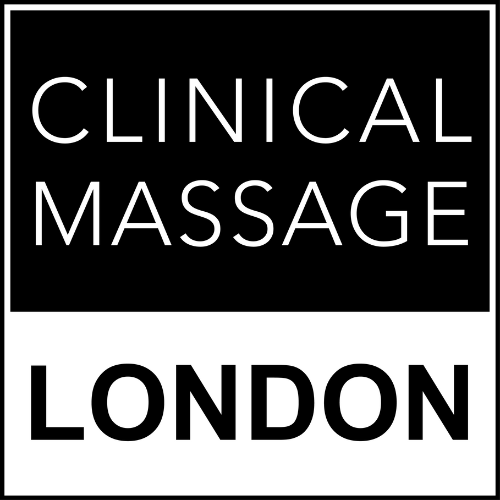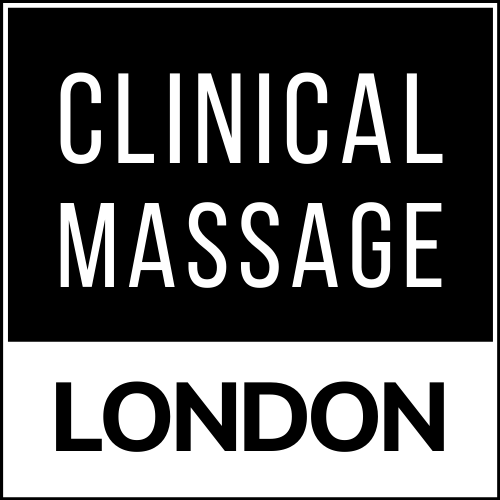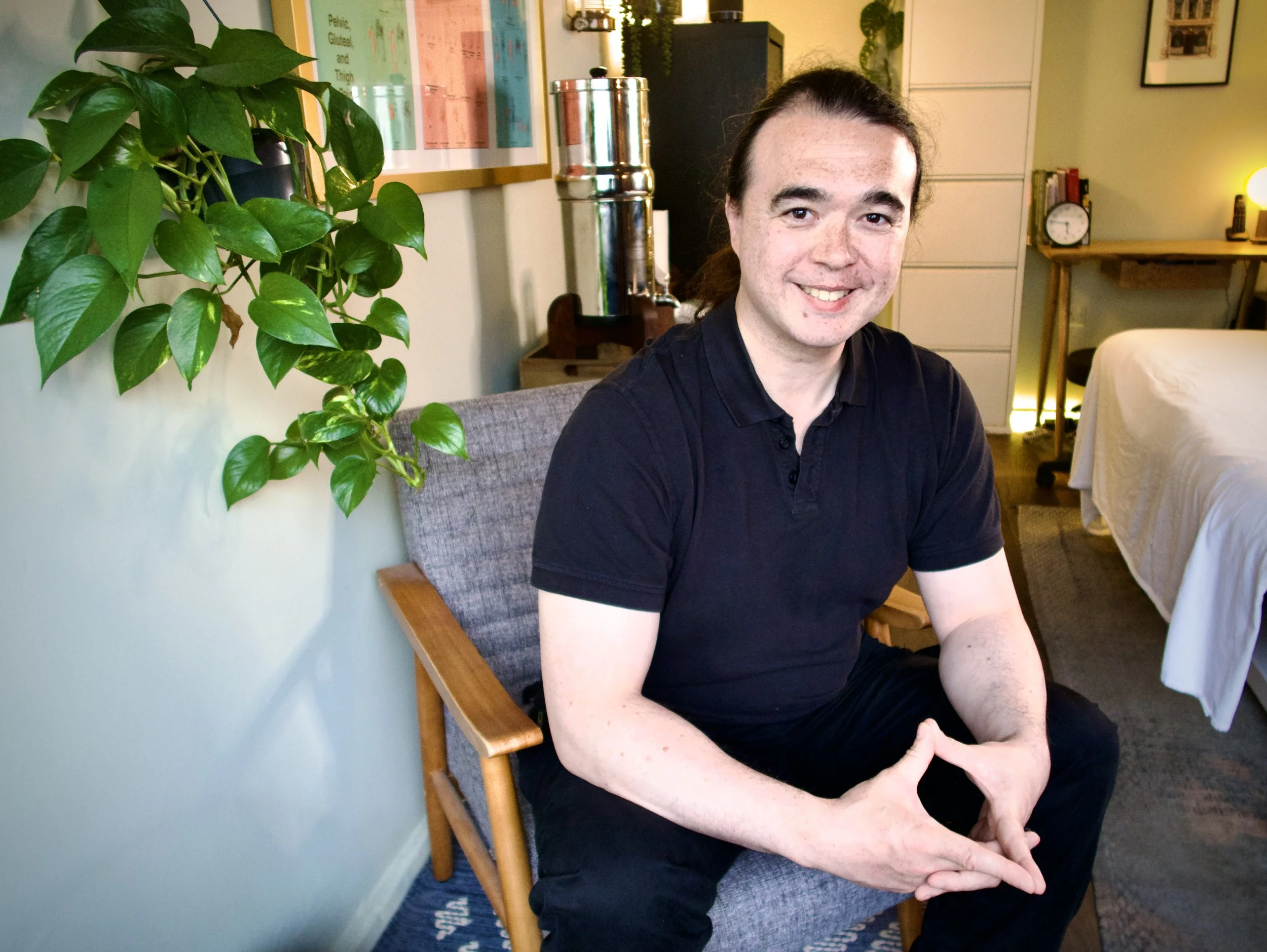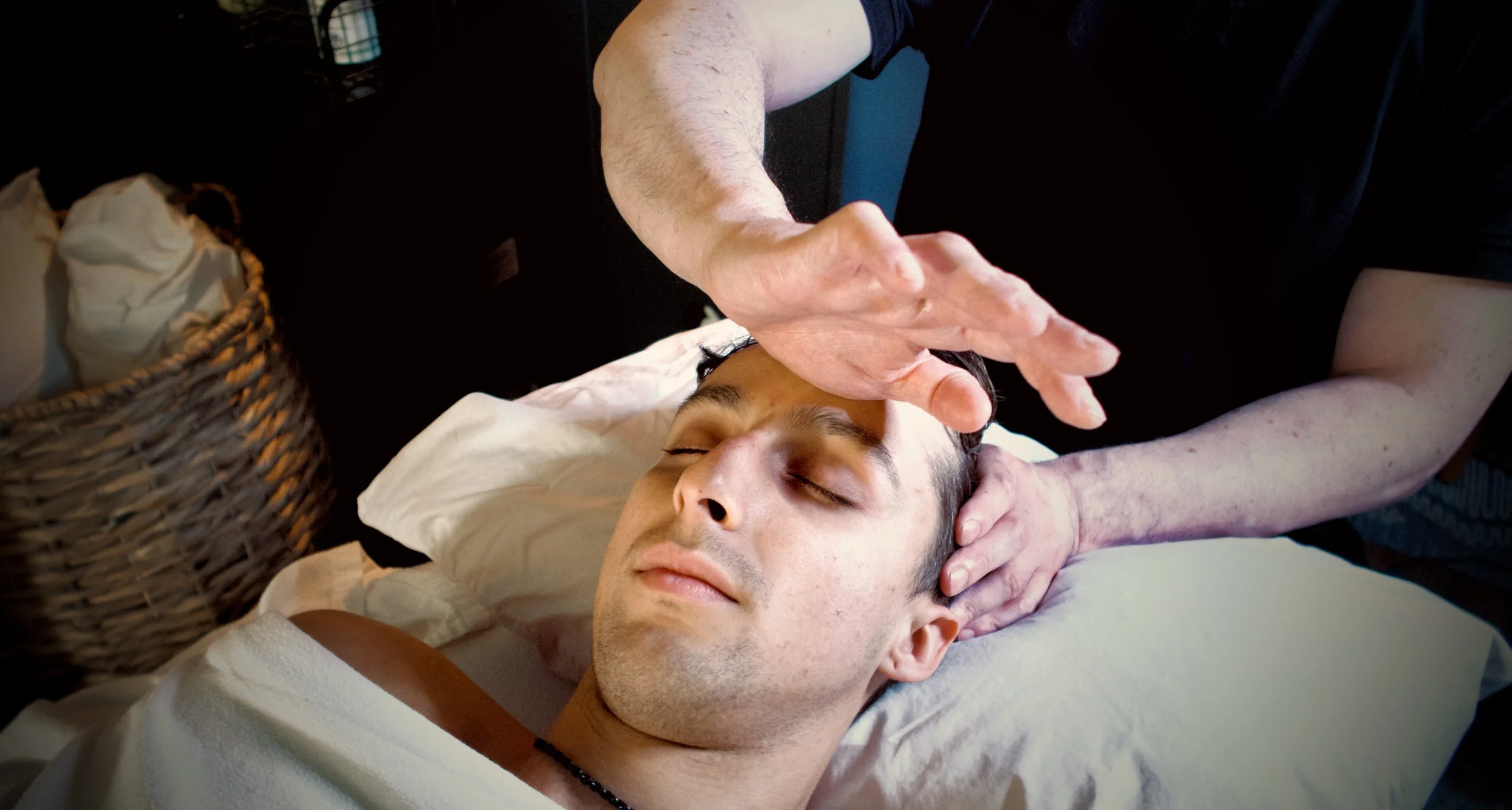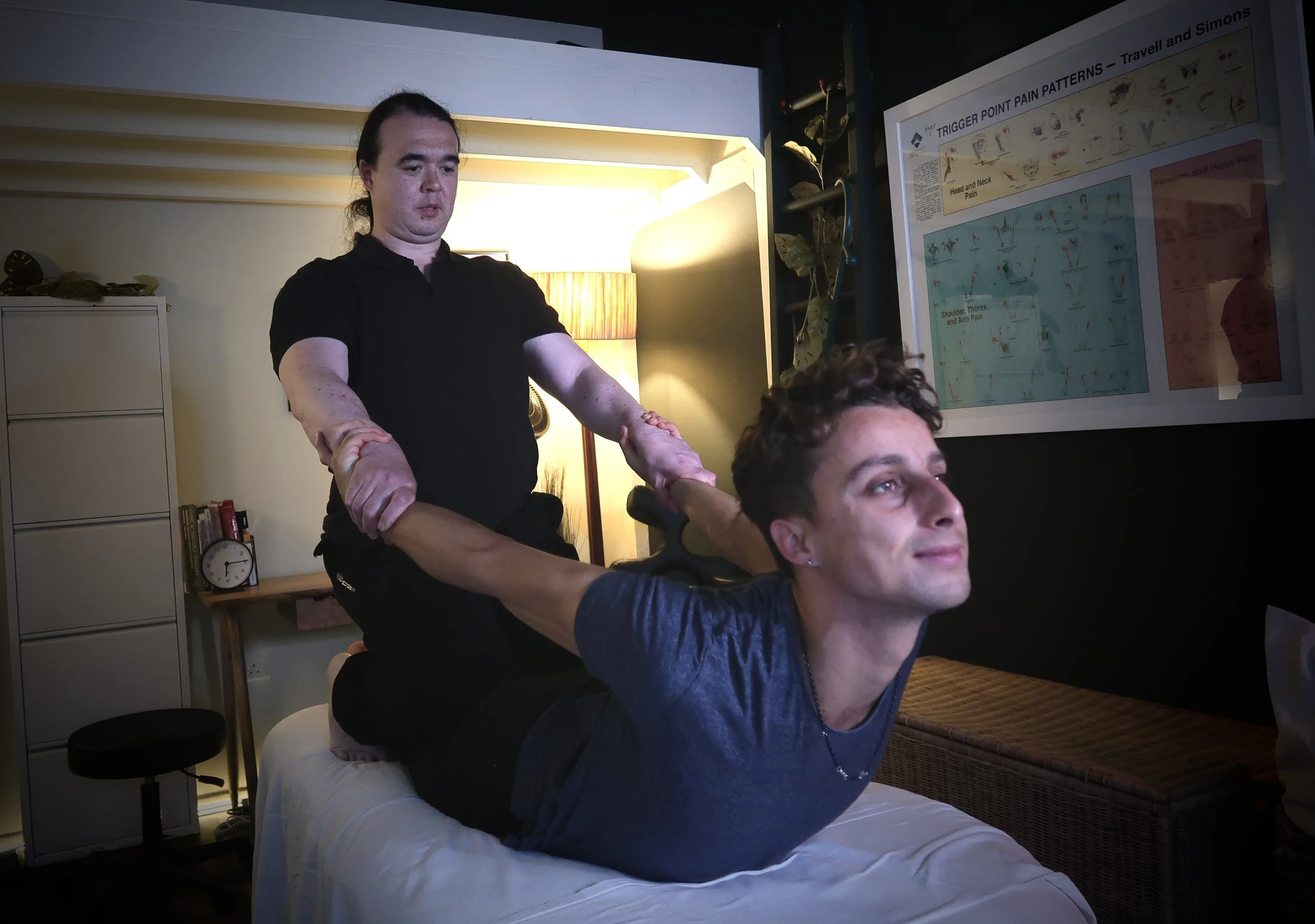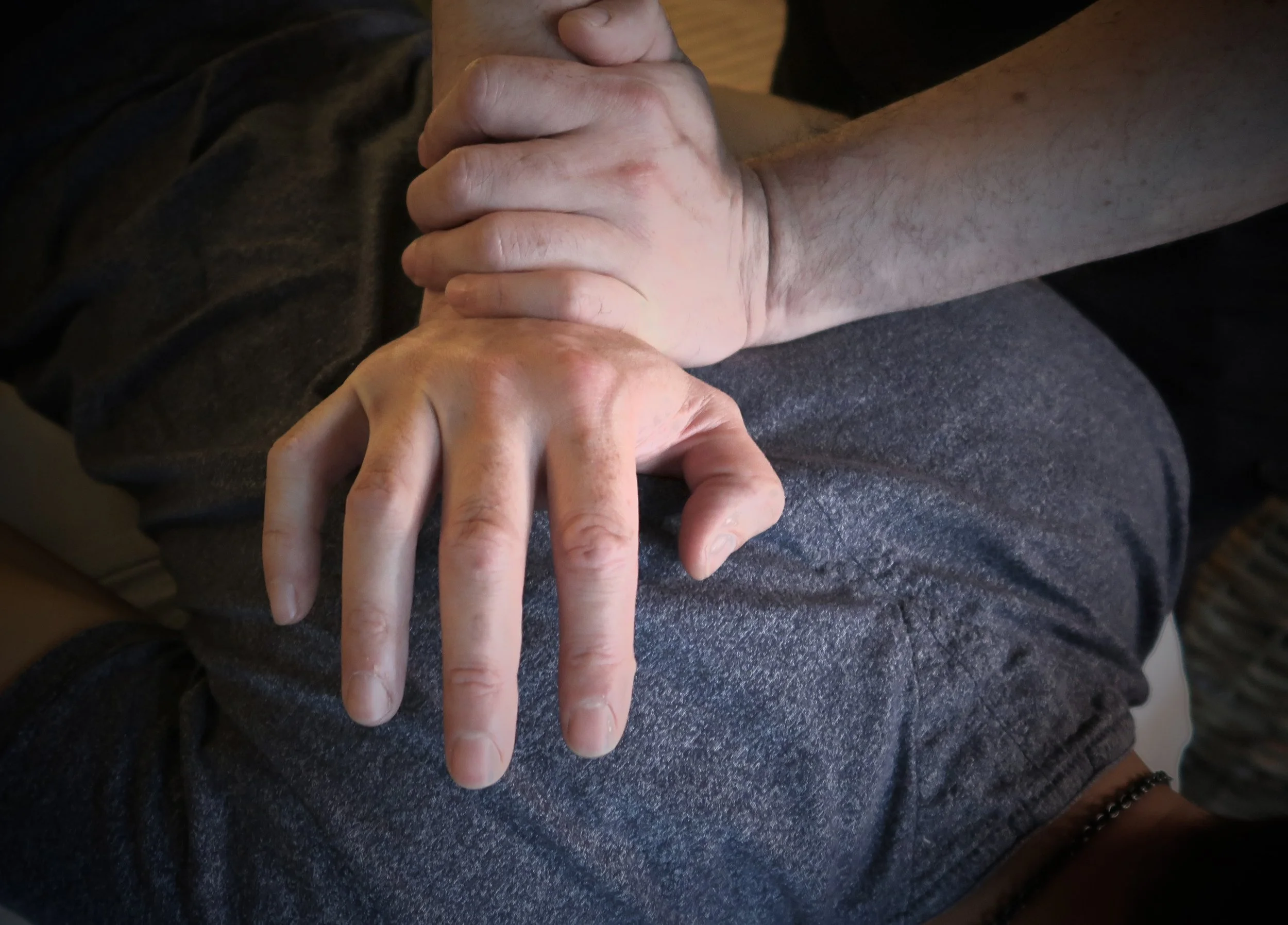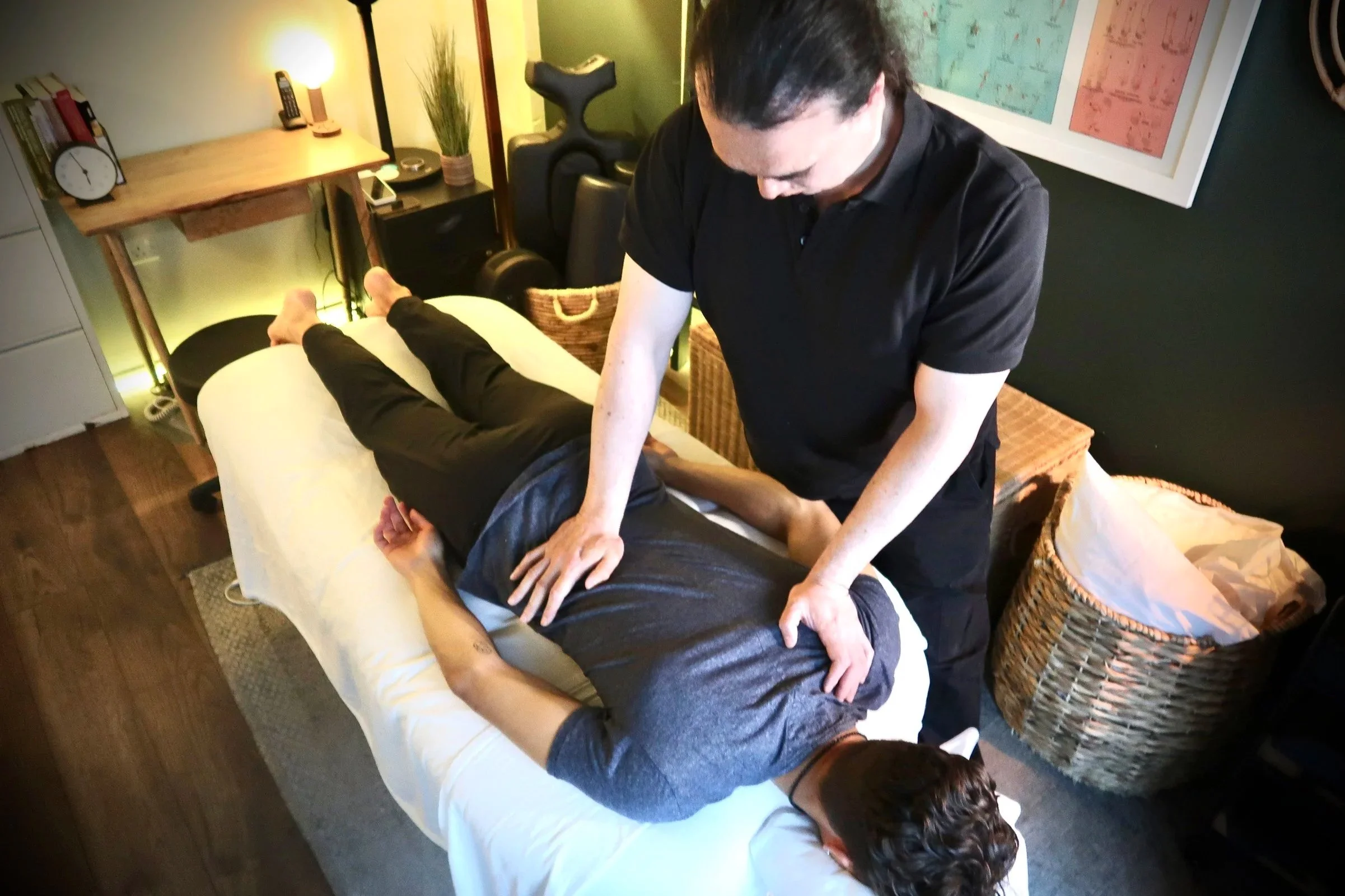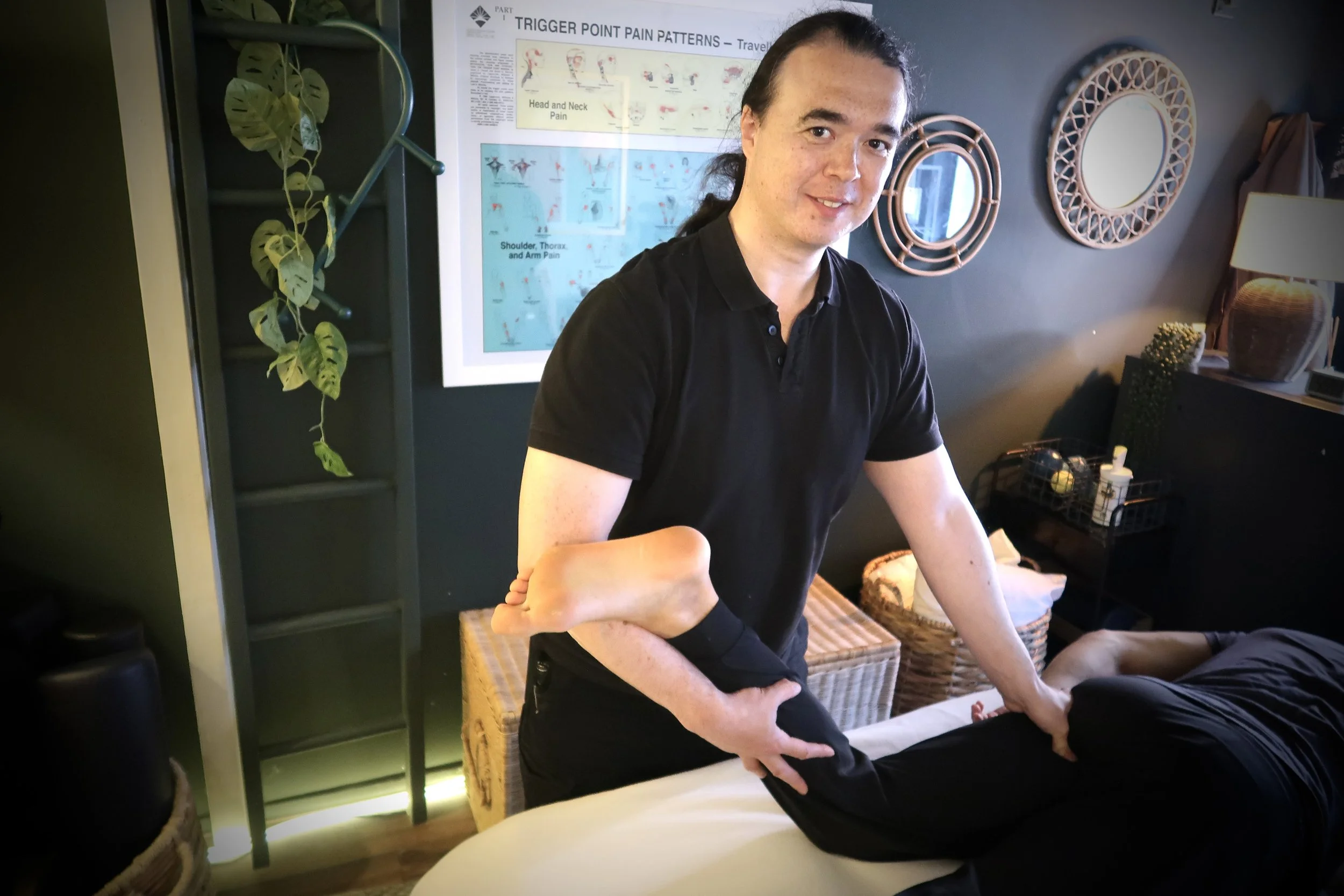Meet James Carolan
Tuina Master Practitioner James Carolan is our newest therapist at Clinical Massage London, he specialises in oriental bodywork, including Tuina (Chinese Medical Massage), Traditional Indonesian Massage and Thai Yoga.
Q & A With Our New Massage Therapist James Carolan
We’re excited to welcome James Carolan, the newest member of our team at Clinical Massage London! James brings a distinctive blend of expertise in Traditional Chinese Medicine (TCM), Balinese massage, Thai yoga massage, and deep tissue and remedial techniques. In this Q&A, he opens up about his journey from dance to massage therapy, how Eastern bodywork informs his approach, and what inspires his work.
From Dance to Deep Tissue: James’s Journey
Oriental bodywork specialist James Carolan shares how his own dance injury recovery inspired his journey into therapeutic massage.
Q: James, tell us a little about your background and what led you to become a massage therapist.
"I'm James Carolan, and I grew up right here, which gives me a real connection to the local community. My first passion was actually dance—I trained extensively and it was my whole world. After my dance career was cut short due to an injury, I struggled to find a meaningful path. I ended up working at a call centre. It was an environment that was high-stress and demanding, but most of all, it felt disconnected from the active, purposeful life I once had."
Q: How did you first discover massage therapy, and how has it impacted your life?
"I discovered it through my own injury rehabilitation. While recovering from my dance injury, I saw countless specialists, but it was the remedial and structural massage that consistently restored my mobility and my faith in my body. It wasn't just physical relief; it was a realization that my extensive body awareness from dancing could be channeled into something therapeutic. It taught me the power of healing over just fixing, and it gave me back a sense of purpose."
Q: What made you decide to become a massage therapist?
"It was a decisive moment after a particularly bad day at the call centre. I realized I couldn't spend another day helping people with their utility bills when I knew I had the potential to help them with their bodies and their quality of life. The combination of my dancer's intuition for movement and the profound help I received during my own rehab made it the clear choice. I wanted a hands-on career where I could truly make a difference."
Q: What surprised you most about being a massage therapist compared to what you expected?
What surprised me most was how much of the job relies on listening skills and empathy. So many postural issues or chronic pain patterns are intertwined with the emotional weight of stress. I expected to be a body mechanic, but I found out I’m also a health educator and a bit of a detective, figuring out the root cause."
A Holistic Approach: Blending Eastern and Western Techniques
James Carolan’s core work is rooted in Chinese Medical Massage (also known as Tuina) for which he holds a Masters Practitioner Diploma from oriental bodywork pioneer, Maria Mercati’s School of Bodyharmonics.
Q: What techniques do you most often use?
"My core work is fundamentally rooted in Tuina (Chinese Medical Massage) and Traditional Thai Massage. I combine Tuina's deep, rhythmic compressions and acupressure points with Thai massage's emphasis on joint mobilization and assisted stretching. I often use elements of Indonesian massage for its specific flow. This allows me to work structurally and energetically."
Q: Do you have a favourite or under-rated technique that you especially enjoy using, and why?
"I really enjoy using the rolling and kneading techniques from Tuina (like gun fa and rou fa). I find them incredibly effective for penetrating deep muscle layers without causing the client pain. They’re underrated because they look simple, but they are precise, activating specific acupuncture points to clear blockages and restore the flow of Qi (energy). It offers relief that lasts."
Rolling technique from Tuina being used on a client’s forehead.
Q: How would you describe your treatment style (communication, pressure, feedback, goals)?
"I’d describe my style as Rhythmic, Structural, and Energy-Focused. My pressure is deep and sustained, following the Eastern principle of engaging the whole body's structure. Communication is constant: I'll guide the client through the breathing and stretches. The goal is always restoring balance—not just in the muscle, but throughout the energy channels."
Q: How do you usually start a session or consultation?
"I always start with a detailed verbal consultation to understand where the client is today. It's essential to gauge their expectations, so I'll ask, 'What do you hope to gain from today's session, and how can I best help you achieve that?' I follow that up with a few targeted questions about their health history. Then, depending on their issues, I'll move into a few physical assessments like range-of-motion tests or a palpation check. This process is vital to ensure that their expectations align with what I can safely and effectively deliver."
Q: What do you do to help clients feel comfortable?
"I establish trust by maintaining professionalism, respecting boundaries, and ensuring I listen far more than I speak. I explain every technique before I apply it and always reiterate that the client is in charge of the pressure and the treatment direction. Comfort comes from feeling safe and having full agency."
Q: What do you generally hope clients take away from a session?
"I hope clients take away a strong sense of confidence in their body and empowerment over their pain. The real win is when they leave with a deeper awareness of their posture and the knowledge that they don't have to live with chronic restriction."
Massage Therapist James Carolan performs a pectoral stretch using Thai Yoga techniques on a client.
Personal Touch & Lifestyle
Q: How often do you get massages yourself, and what do you enjoy about them?
"I aim for once a month. It’s absolutely essential for maintaining my body and preventing burnout. I enjoy being completely passive and letting my mind switch off. It reminds me how powerful it is to receive and keeps my empathy high—it’s research and self-care rolled into one."
Q: Outside of massage, what do you enjoy doing to stay grounded (hobbies, fitness, mindfulness, etc.)?
I stay grounded through highly focused activity. I live for my time in the gym doing resistance stretching—it’s a powerful way to maintain my own structural health and explore the range of motion I work for with my clients. I also practice Filipino martial arts, which is excellent for mental discipline, fluid movement, and coordination. Finally, my faith is a huge grounding force: my time at church provides me with emotional and spiritual stability."
Q: Who or what inspires you most in your career or life?
"The person who inspires me most, both in my life and my career, is my late mother. Her work ethic was truly incredible. She faced every challenge with courage and resilience, always pushing forward and striving to do better right up until her last days. That spirit of perseverance is what I carry into my practice every day—the belief that you must constantly work, push, and learn to make a real, lasting impact."
Q: Is there a book, course, or podcast that has shaped your practice or outlook?
"The most impactful book on my overall outlook wasn't a technical manual; it was 'Watch My Back' by Geoff Thompson. That book directly inspired me to face my own fears and take a huge leap of faith into the unknown world of massage therapy. It gave me the mental strength to transition from my previous life, trust my instincts, and fully commit to this hands-on career where I could truly help people."
Massage Therapist James Carolan says his treatment goals always include restoring balance—not just in the muscle, but throughout the energy channels.
Q: Why do you love being a massage therapist?
"I love the blend of art and science. My dancer's mind loves the complexity of body mechanics, and my hands love the tangible reward of relieving pain. It’s immensely satisfying to use my knowledge to restore movement and empower someone to feel better in their own skin."
Q: The types of clients I feel most passionate about working with are…
"I feel most passionate about working with people in pain from long-term sedentary work and 'recovering athletes'—people who used to be very active but have had their life or movement pattern restricted by an injury. I love applying my deep understanding of body mechanics and alignment to get them back to feeling fluid and strong."
Oriental bodywork therapist James Carolan says whilst both Western and Eastern systems involve touch, TCM techniques like Tuina (Chinese Medical Massage) are fundamentally focused on working the body to bring about systemic harmony.
Q: What is TCM, and how does it differ from other massage approaches?
"TCM, or Traditional Chinese Medicine, is a holistic medical system that has been used for thousands of years. It differs from Western approaches because it sees the body not just in terms of anatomy, but in terms of energy, or Qi.
While both systems involve touch, TCM techniques like Tuina (Chinese Medical Massage) are fundamentally focused on working the body to bring about systemic harmony. This involves using specialised techniques to move and balance Qi and blood through the meridian channels.
This framework offers unique tools:
Specific Acupoints: We utilise specific acupoints along the meridians to influence conditions not commonly targeted by conventional massage, such as headaches, digestive issues, or chronic fatigue.
Distal Point Treatment: Crucially, TCM utilizes distal points. If a local injury or acute inflammation makes touching a specific area unsafe (contraindicated), we can work a point much further away—for example, on the hand or foot—to powerfully affect the energy flow in the injured area. This allows us to provide relief and accelerate healing even when local touch isn't possible."
TCM practitioner James Carolan describes his work as rhythmic, structural and sustained, following the Eastern principle of engaging the whole body's structure.
Philosophy & Professional Insight
Q: What role do you think massage plays in overall wellbeing, beyond just easing aches and pains?
"I see massage as creating a strategic window of opportunity. Beyond the immediate relief of aches and pains, its primary role is to momentarily lift the burden of pain. Pain is distracting and often paralyzing. By temporarily easing that load, we create a space where the client can step away from their physical discomfort and focus on the next steps for lasting wellbeing. For some, that opportunity means they can finally perform the necessary strengthening or corrective exercises. For others, it's a critical moment of mental and emotional clarity—a chance to truly assess their state and work out their next plan of action in their life. It’s an empowering pause that facilitates long-term change."
Q: What’s one common misconception clients have about massage, and how do you like to explain it?
"The biggest misconception I encounter is that massage is just a luxury or a frivolous treat. I often hear people say, 'It feels too satisfying, so it can't really be good for me.' I explain that massage is actually a necessity in our modern, high-stress lives. When you book a session, you are making a crucial investment in your function, not just your pleasure. We use that moment of deep, targeted relief to interrupt the pain cycle. It’s strategic maintenance for your body, proving that sometimes, the things that feel the best are exactly what your body needs to function optimally and stay healthy long-term."
Q: How do you know when a session has gone really well?
“The clearest sign of a successful session is when the client feels noticeably closer to the specific goals we planned together at the start. It's not just about temporary relief; it's about measurable progress. When they can physically and mentally feel that they are taking a meaningful step forward on their journey to functional improvement and lasting wellness—that's when I know the session has truly hit its mark."
Q: If you had to describe your approach to massage in three words, what would they be?
"Three words:Movement, Precision, Awareness."
What makes your treatments unique compared to other therapists?
"My uniqueness lies in my foundation inEastern bodywork (Tuina, Thai, Indonesian) combined with my dancer's structural awareness. It means I treat the body as a network of energy channels and kinetic chains, identifying how tightness in one area affects movement in another. This integrated, holistic release focused onrestoring balance and functional movement is what sets my work apart."
Q: Is there a dream client group, location, or style of practice you’d love to explore one day?
"My 'dream' practice isn't about a specific title or location; it's about being in an environment where I can be most fruitful with my work. That means being in a setting—whether it's a multidisciplinary clinic or a community practice—that values and supports the effective, holistic care I provide. Anywhere I can use my skills to their full potential and truly see people benefit and achieve their long-term health goals is where I want to be."
Our newest guest therapist James Carolan comes from a background of oriental bodywork, and believes the best measure of whether a session has gone well is when his clients physically and mentally feel that they are taking a meaningful step forward on their journey to functional improvement and lasting wellness.
Meet Diane Croskin, our newest therapist at Clinical Massage London in Dalston.
